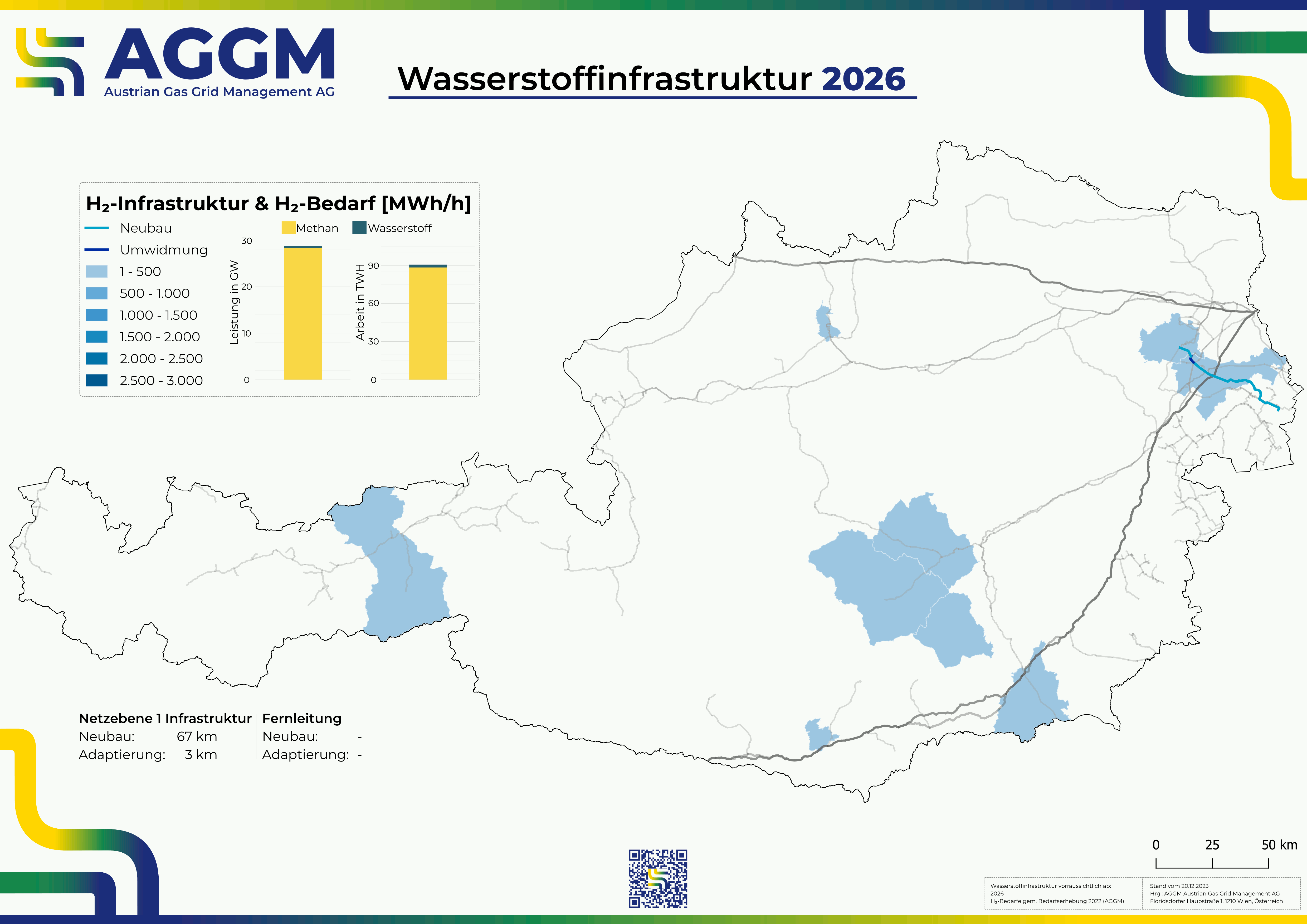H2 Roadmap
Hydrogen, the energy carrier of the future
This vision of the H2 Roadmap goes beyond the defined goals of the Austrian hydrogen strategy and includes the creation of a dedicated hydrogen network. This network is to be largely created by repurposing existing gas pipelines by 2050 and will run parallel to the existing gas network. It will grow with the increasing demand for hydrogen and thus guarantee a secure supply at all times.
How the Hydrogen Network is Created
Infrastructure Planning
The Austrian gas network with its high transport capacities forms the basis for tomorrow's hydrogen infrastructure. The repurposing or new construction of gas pipelines, especially the West Austria Gas pipeline (WAG) and Trans Austria Gas pipeline (TAG), by 2030 is a key component of the H2 Roadmap. By 2050, only 300 km of gas pipelines need to be newly constructed so that hydrogen and methane can be transported in parallel in the future. The rest is made possible by repurposing 1,400 km of existing gas infrastructure.
H2 Roadmap for Austria
Development of a Dedicated Hydrogen Network
The Austrian federal government has set itself the goal in the government program 2020-2024 of making Austria climate-neutral by 2040, preferably through renewable domestic energy sources. This endeavor is in line with the goals of the European Green Deal and the legally binding Paris Agreement of 2015. Motivated by this, AGGM, in cooperation with network operators based on the ONE100 study, has created an H2 Roadmap for Austria. This demonstrates that a dedicated transport infrastructure for hydrogen is necessary to achieve the following points:
- Ensuring climate neutrality in sectors difficult to decarbonize, especially energy-intensive industry.
- Supporting the transition to a renewable energy system.
- Ensuring sustainable and secure energy supply for Austria.
Hydrogen Demand Survey
Updating the H2 Roadmap
The demand query is continuously updated. Currently, another demand query is running via the distribution network operators to make the H2 Roadmap even more precise.
Please report any demand for renewable gases as part of the 2024 Long-Term and Integrated Planning (LTiP) survey.
Basis for Planning
In spring 2022, AGGM, in cooperation with the distribution network operators, surveyed the demand for methane and hydrogen from industrial companies for the years 2023-2050. The results showed strong interest in hydrogen from the industry. AGGM is currently conducting another demand survey to refine the results and determine the demand more accurately.
The results are regularly updated and serve as the basis for shaping the H2 Roadmap.
The industry is thirsty for hydrogen.
The following graph visualises the results of the hydrogen demand survey.
- The yellow line shows the gas consumption of the last few years.
- The light blue line shows the increasing demand for hydrogen in the future.
- The green line shows the decreasing methane demand.
- The dark blue line shows the sum of hydrogen and methane, cumulated from the base scenarios.
Send additions
Additions and questions about H2- production and CH4 & H2 demand can be sent to Georg Wernhart using the following forms.
Here are the forms for methane and hydrogen demand & production:
AGGM-Bedarfserhebung_H2-Aufbringung(only German)
AGGM-Bedarfserhebung_CH4 und H2 Absatz (only German)
Hydrogen transport in the Austrian gas network
The Austrian gas network has sufficient capacity for the future transport of renewable gases. Only 300 km of new gas pipelines need to be built so that hydrogen and methane can be transported in parallel in the future. The remainder will be made possible by repurposing 1,400 km of existing gas infrastructure.


